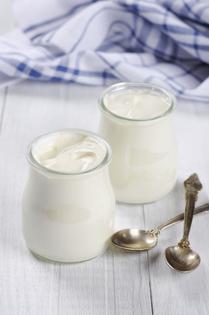ENVIRONMENTAL NUTRITION: Here's the scoop on Greek yogurt
Greek families have been making it for generations. But a few years ago, food companies decided to get into the Greek yogurt business, a move that has proven popular with consumers. What makes it so special? Traditionally, Greek yogurt is made by straining out the whey (watery liquid) in yogurt, resulting in a thicker, creamier yogurt that is more nutrient-dense. For example, 6 ounces of traditional yogurt contains approximately 5 grams of protein, while the same amount of Greek yogurt contains roughly 14 grams. This is a fantastic benefit because protein, among many attributes, helps maintain muscle mass and aids in satiety -- which means you'll feel full longer. Given that many older people don't get enough protein, yogurt can help fill the protein gap.
However, there are a few factors to consider before you start downing Greek yogurt from dawn to dusk. Plain Greek yogurt is lowest in sugar and calories. Once flavorings, such as honey and other sweeteners are added, the sugar and calorie content climbs. And not all Greek yogurts are made in the traditional way; some brands use thickeners, such as cornstarch or milk protein concentrate, to create that creamy texture.
Helpful hints. Keep these tips in mind when shopping for Greek yogurt.
-- Don't forget about fat. Greek yogurt offers many nutritional benefits, but since it's made from milk the full-fat version contains a good deal of saturated fat, as well as more fat and calories, compared with reduced fat varieties. Look for "low-fat" or "nonfat" on the label to keep your calorie and saturated fat intake to a minimum.
-- DIY flavor. When you go from plain yogurt to a flavored yogurt, you gain a lot of added sugar and calories. Try choosing plain and flavoring it yourself with vanilla, coffee or lemon extracts, or fresh fruit and a thin drizzle of honey.
-- A great cooking substitute. Fat-free, plain Greek yogurt is handy in the kitchen. You can use it as a healthful substitute for sour cream, mayonnaise, or cream cheese in cooking and baking, as well as in sauces, dressings and toppings to help boost protein and calcium intake, and cut calorie and saturated fat intake.
(Environmental Nutrition is the award-winning independent newsletter written by nutrition experts dedicated to providing readers up-to-date, accurate information about health and nutrition in clear, concise English. For more information, visit www.environmentalnutrition.com.)











Comments